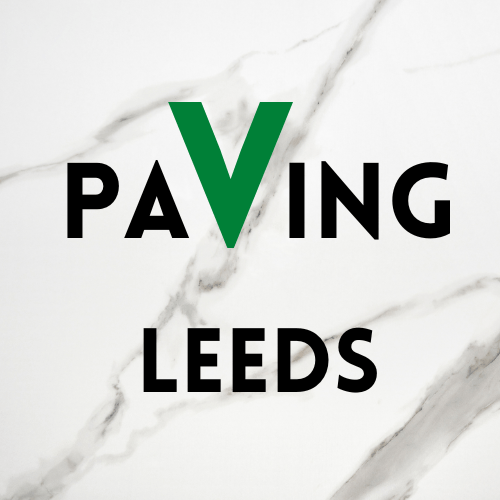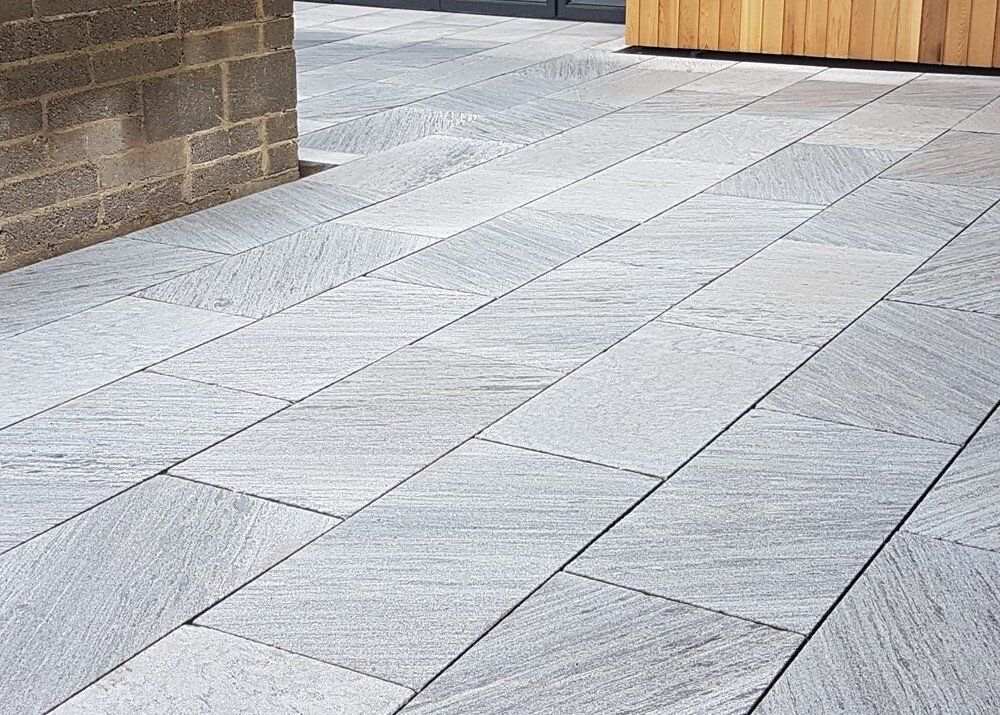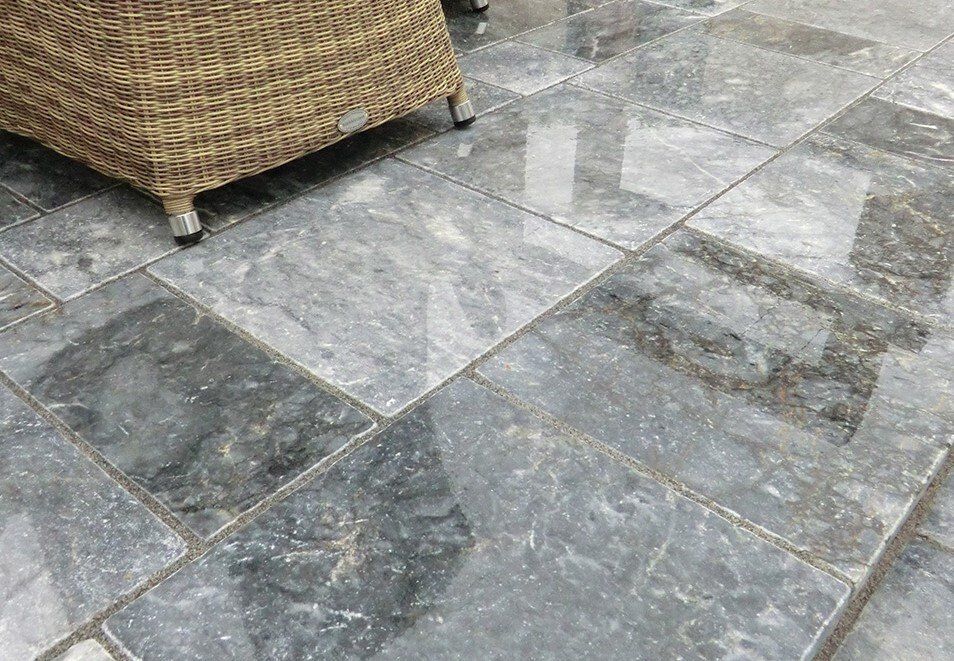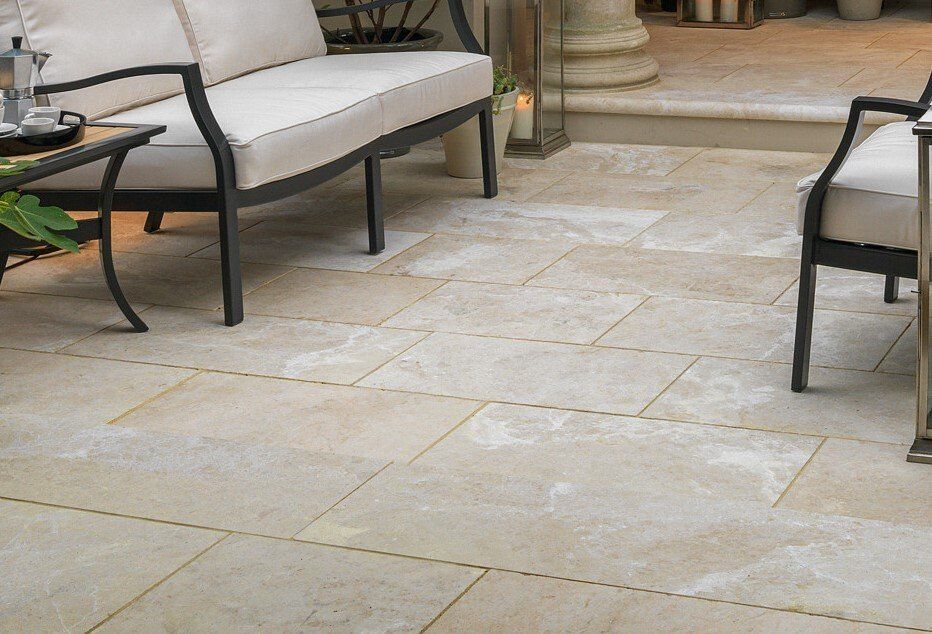Marble Paving Leeds
Marble Paving
Whilst marble has traditionally been associated with table tops, work surfaces and indoor floor tiling it is also versatile enough for outdoor use and can provide stunning patio areas. It is probably seen as one of the more luxurious paving options and indeed is one of the more expensive paving slabs but it can be well worth the investment.
Marble is a form of limestone, a metamorphic rock formed from recrystalised carbonate minerals -it naturally created following extreme pressure and temperature making it very durable, high quality material. as a natural material other minerals, sometimes referred to as impurities, will also be formed within the rock. It is these which create the additional different coloured veins and swirls that provide a 'marbled effect'.
The cutting and finishing means that both rough and smooth polished surfaces can be created from marble giving you a number of options for your patio project.
Marble Paving Options
Since a smooth polished finish when wet can create a slippery surface the very shiny smooth finished marble is the typical finish for various indoor use. For pavers you will still have a uniform smooth finish the additional process which create a glossy finish are not used often on outdoor paving stone to provide a much less slippery surface, which is safer in wet or rainy conditions - which we know all too well is common in the UK. The finish is sometimes referred to as a tumbled finish so ideal for all weather outdoor use. Polished marble paving can be used outside but should be viewed with some element of caution when wet.
Colours most commonly range from a very light to white grey through to a much darker charcoal - almost black finish. Both light and dark pavers will have veins of other colours or shades running through them creating very interesting unique patios. For one type of paving stone you may get up to six different size and shapes which can include a softer curved edge. This are referred to as a bullnose step or coping and will typically be used to form steps, or an edge to a swimming pool, to provide a gentler looking edge to the steps.
Why chose marble paving for your patio?
Similar to porcelain the denseness of marble means that it is much less porous than other paving stones and as a result is much more resistant to wear and tear, stains and spills. That said it is always important to clean and spills up as quickly as possible since there will be some level of porosity in the marble. As with anything outdoors it will be subject to the elements, so a clean every once in a while will keep you marble patio looking fantastic and avoid a more intense clean if a build up of debris and algae has been allowed to accumulate.
When cleaning marble you should avoid and harsh chemicals such as descaling cleaners, bleaches or vinegar as they can strip away some of the colour intensity. Simply cleaning with water and some mild detergent should do the trick. If however, you do have a stubborn stain using a cleaner specially formulated for marble should be used or you can try baking soda, mixed up with water to form a paste , which if left for a day on a stain can absorb it.
Need help?
Looking at getting a Marble Patio in Leeds?
Frequently Asked Paving Questions
-
Can you paint patio slabs?
The brief reply to the question is yes. However, if you are thinking of repainting your outdoor patio rather than replacing it you truly ought to not try to do this on a tight budget - which may seem counterintuitive but it will be counterproductive.
Top-quality acrylic based paints would certainly be best. However, you must understand that to provide resilience these paints will certainly require to be applied heavily and also in numerous coats with a brush or roller. Also, they should be allowed to completely dry normally for a couple of days, so please inspect the forecast prior to starting this course of action. These paints are often designed for warehouses for marking safety routes so the colour options may also be a little unnatural for a garden environment.
With a painted patio - remember this is just a layer and will undergo table and chair bumps and scrapes. It may give a band-aid approach to boosting the look of your patio for a little while but once the paint starts to chip away attempting to overpaint once more will certainly not look great!
-
Can you lay patio slabs straight onto grass?
Of course, you can simply lay a paving piece on any surface area however you need to think about what will be completed effect. If you just intended to use a few slabs simply as a stepping rock then with a little sand and a little work with a spade you could level the ground to place a paver that can be stepped on without wobbling for a while. However, if you are intending on utilising chairs, tables, bar-b-ques you really should set your paving slabs into an effectively-prepared sub-base, which will certainly provide a strong, flat base for your pavers to then be fixed onto a mortar base. This will prevent weeds from showing up via paving joints and also ensure you do not have loose or unsteady paving stones.
-
Which is better for a patio area - decking or paving?
Clearly, an installer who only does one of these will persuade you down that particular path. However, there are some scenarios where one may have the edge over the other. One of the main ones being the budget you are working with.
As a quick comparison - especially against wooden decking a patio made up from any of the slab options we have covered will be stronger, and as a result, last longer and require less maintenance. However, if you want to have a large single level social area and have a garden on a steep slope decking will offer a more cost-effective solution. The decking can be laid on a frame, which can simply be build up from the lower end of the slope. To do the same for a paved patio will require much more death moval and supporting walls to be constructed so will be more costly.
-
Can the same paving slabs be used for a driveway?
Yes - certain types of paving can also be used for a driveway so you can have consistent paving from the front of your house down the sides and to your back garden patio.
Not all pavers will be suitable but granite setts and driveway grade Indian stone would be perfectly good choices for this.
-
What's the best way to clean a patio
Clearly, this will depend on how dirty your patio is and whether or not staining has taken place.
For regular quick and easy cleaning simply mixing a cup of washing up liquid in a bucket of warm water and brushing this across your patio with a firm bristled brush is suitable for all types of pavers.
Pressure washing can be used for most pavers but this can remove sealers - although thoroughly cleaning this way will be good preparation for re-sealing when dry. with a pressure washer you should be more careful near the joints as high pressure can damage and dislodge jointing. If this does happen it is best to apply some jointing compound to prevent this from becoming an area for weed and algae growth. There are many options on the market, many of which can simply be brushed into the gaps so no DIY skills requried.
Business Hours
- Mon - Sun
- -
All Rights Reserved | Paving Leeds - Leeds paving contractors



